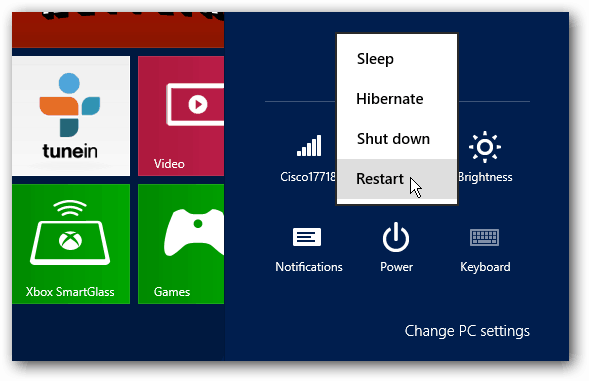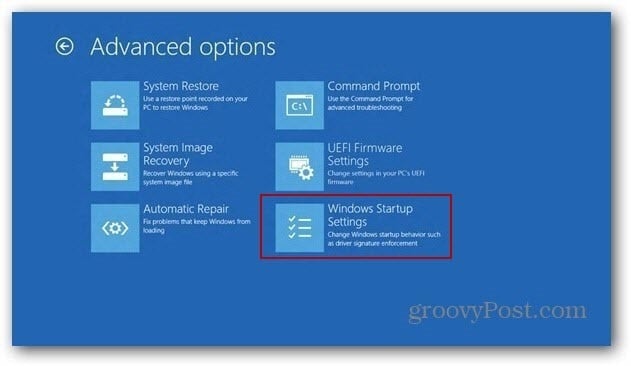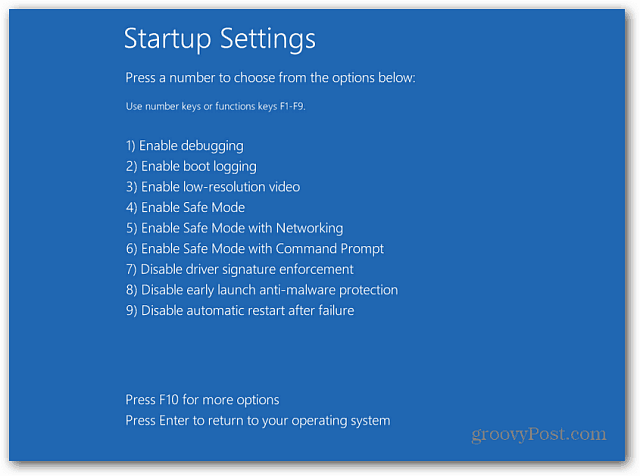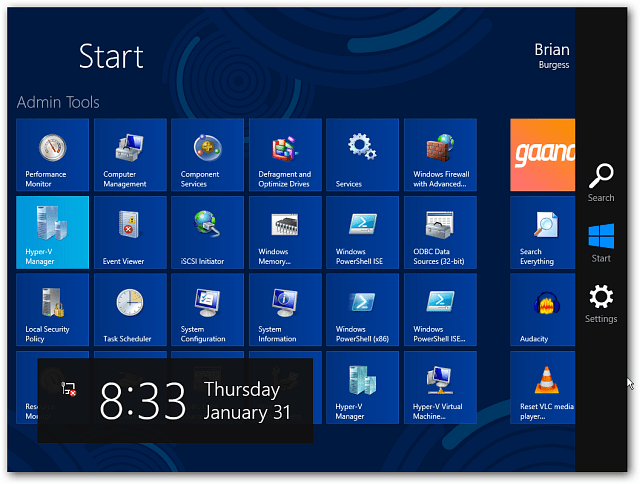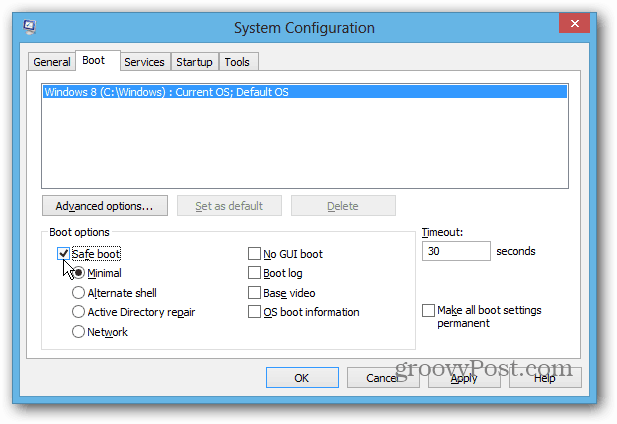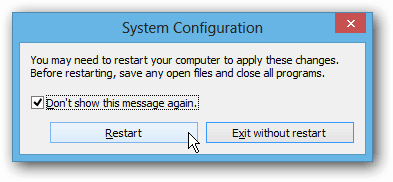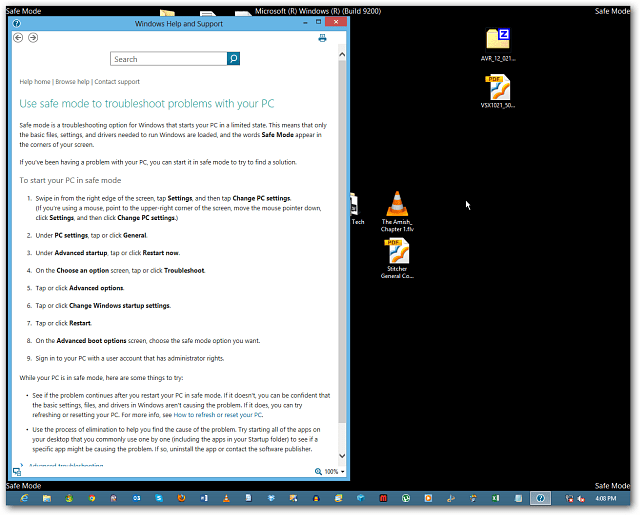I previously wrote up an article while using the Developer Preview version of Windows 8 that required a lot of Command Line geekery to enable Safe Mode. But now with the final version of Windows 8, it’s already enabled and there’s a couple of ways to get to it.
Boot Windows 8 Advanced Boot Options
The easiest way to get into Safe Mode is to hit Windows Key + I to bring up the Settings bar. Now the important part: Click the Power button, hold down the Shift key, and at the same time click Restart.
When your computer restarts, you’ll be brought to the Advanced Options Screen. The menu is straight-forward, just click or tap Troubleshoot > Advanced Options > Windows Startup Settings and click the Restart button on that screen.
Your computer will restart again, and you’ll see the Startup Setting screen which (along with other options) allows you to boot into Safe Mode by hitting the number or Function keys.
There you go! Now you’re able to start troubleshooting your system with the minimal amount of apps and services enabled to help troubleshoot your system.
While a bit more complicated, the Windows 8 Advanced Boot Options give you a lot more functionality. Two of the awesome new features it includes is PC Refresh and PC Reset. And, yes, this also works with the Surface and Windows RT.
Boot Into Safe Mode Using System Configuration
Another way you can boot into Safe Mode easier, is while you’re already logged in. First, use the keyboard shortcut WinKey + R to bring up the Run box and type: msconfig and hit Enter.
Next, in the System Configuration window, select the Boot tab. Then under Boot Options check the Safe Boot box. Below that are four options:
Minimal: Safe Mode without a network connection (typically best for home users)Alternate Shell: Safe Mode with the Command Prompt (advanced power user option)Active Directory Repair: This is for restoring a server Domain Controller (home users don’t need to worry about this one)Network: Safe Mode with a network connection (allows you to reach the internet and other devices on your network)
After making a selection, click OK and you’ll get a message to restart your computer to apply the changes.
When your system restarts, it’s booted in to Safe Mode automatically. You don’t need to press any keys. This method should work with previous versions of Windows too.
I found this amazing tip on WinAero.com. They have a utility (Boot UI Tuner) that does this with a GUI. Comment Name * Email *
Δ Save my name and email and send me emails as new comments are made to this post.
